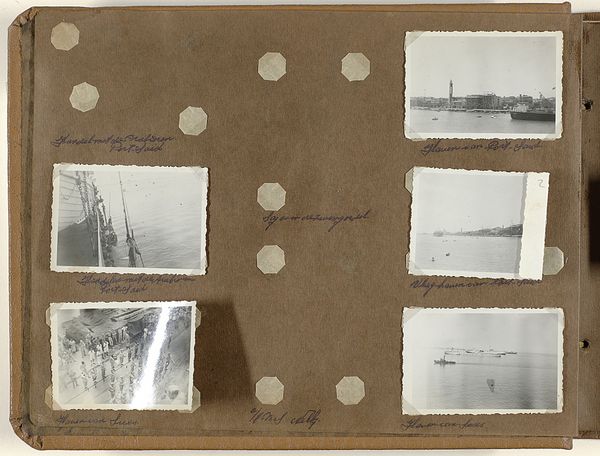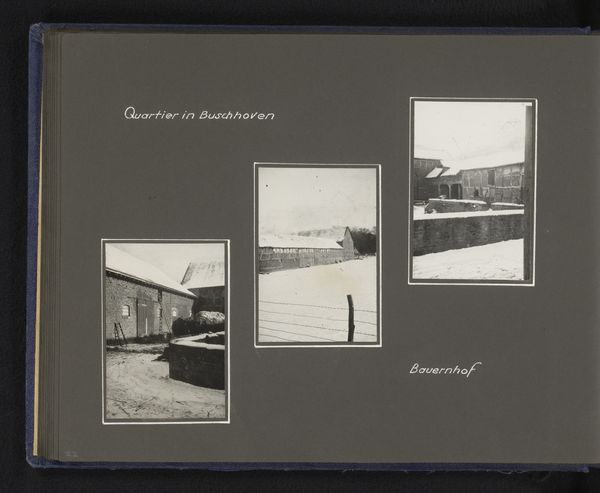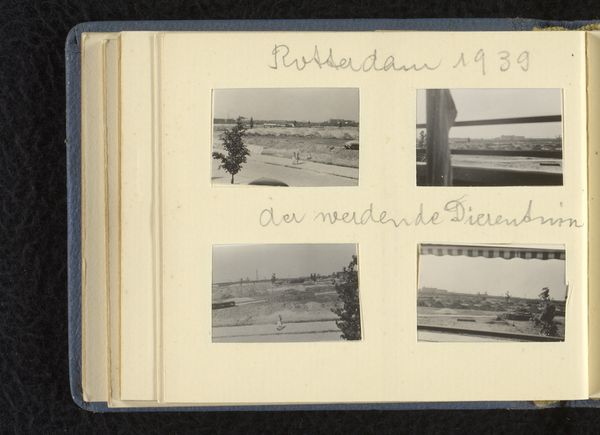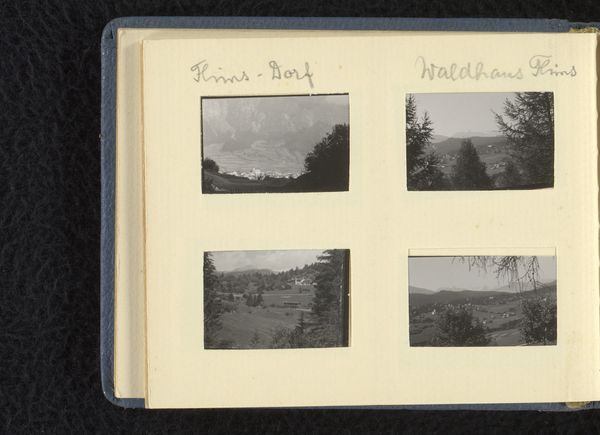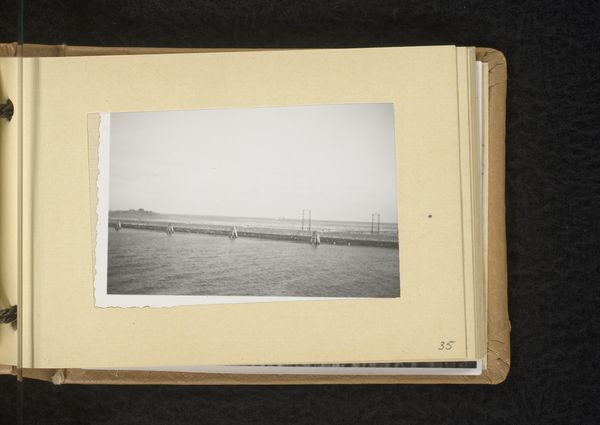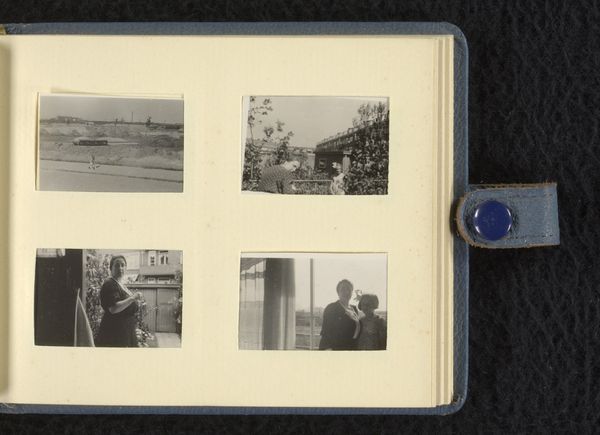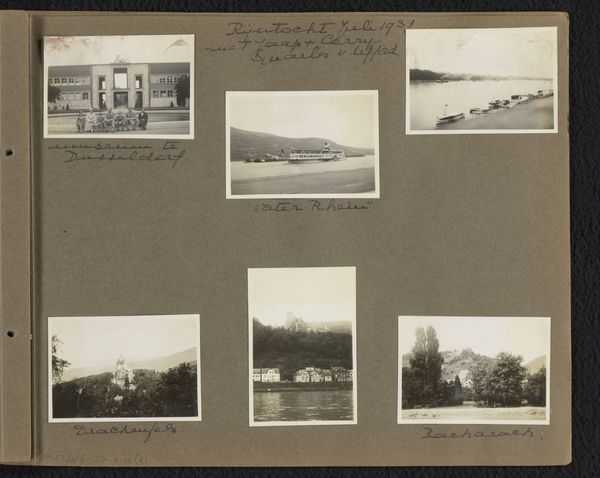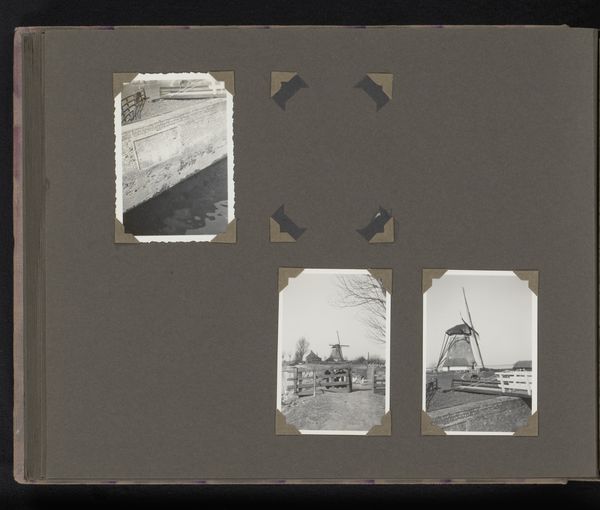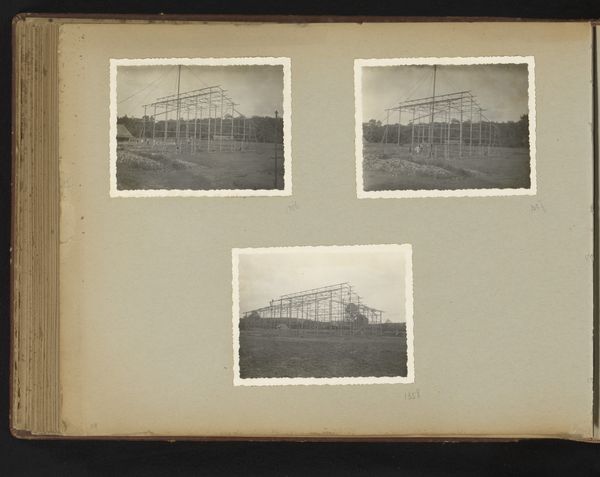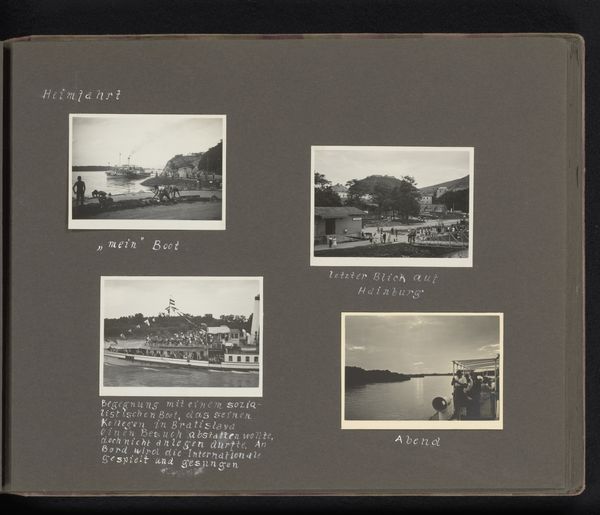
print, photography, albumen-print
# print
#
landscape
#
street-photography
#
photography
#
cityscape
#
modernism
#
albumen-print
#
realism
Dimensions: height 33 mm, width 44 mm, height 85 mm, width 105 mm
Copyright: Rijks Museum: Open Domain
Curator: At first glance, it appears orderly, but undercurrents suggest melancholy. The contrast seems significant, between the neatly organized photos and what feels like underlying somberness. Editor: Yes, this albumen print from 1938 is titled "De buurt waar de familie Wachenheimer woonde, 1938, Rotterdam"—"The neighborhood where the Wachenheimer family lived, 1938, Rotterdam." This series of street photography intends to memorialize something on the verge of disappearing. Curator: Albumen prints have a fragile, ethereal quality—it mirrors that ephemeral moment of recognition that things are about to alter irrevocably. Does this fragility somehow echo that pre-war era? Editor: Absolutely. The choice of medium is telling, almost foreshadowing. Here we see a deliberate attempt to record not just a place, but an atmosphere pregnant with precarity for a specific community. Think about it: 1938. What visual signifiers within these pictures speak to the impending devastation? Curator: The lack of people. Wide streets but empty, lending an eerie quiet. Absence can signify erasure or displacement just as powerfully as any presence. They were living a precarious life and the photos capture that in some way, even subtly. Editor: Precisely. While presented as an urban landscape study, the visual silences carry the weighty context of impending social and political breakdown. Curator: How crucial it is to remember that even seemingly innocuous images bear coded cultural weight. They are artifacts speaking beyond their explicit representation, a function often invisible in traditional historical accounts. What would the Wachenheimer family make of these photos surviving today? Editor: Indeed. Consider photography’s capacity for both preserving and omitting narratives. What's presented here isn't just what exists, but also hints at what's being suppressed or soon will be, making the preservation even more important. These are powerful choices that speak directly to themes of memory, identity, and historical justice, particularly concerning marginalized communities. Curator: Thanks for drawing attention to this complex layering. These photos act like contemporary symbolic reliquaries reminding viewers of events both ordinary and historically charged. Editor: Agreed. Understanding this reminds us how personal and political archives can shape collective understanding. Thank you.
Comments
No comments
Be the first to comment and join the conversation on the ultimate creative platform.
